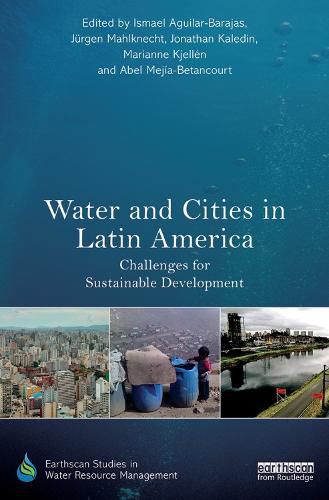Readings Newsletter
Become a Readings Member to make your shopping experience even easier.
Sign in or sign up for free!
You’re not far away from qualifying for FREE standard shipping within Australia
You’ve qualified for FREE standard shipping within Australia
The cart is loading…






Approximately 80 per cent of the population of Latin America is concentrated in urban centres. Pressure on water resources and water management in cities therefore provide major challenges. Despite the importance of the issues, there has been little systematic coverage of the topic in book form.
This work fills a gap in the literature by providing both thematic overviews and case study chapters. It reviews key aspects of why water matters in cities and presents case studies on topics such as groundwater management, green growth and water services, inequalities in water supply, the financing of water services and flood management. Detailed examples are described from Argentina, Brazil, Colombia, Ecuador, Mexico and Peru, and there is also a chapter comparing lessons which might be learnt from US cities. Contributing authors are drawn from both within and outside the region, including from the Inter-American Development Bank, OECD and World Bank to set the issues in a global context.
$9.00 standard shipping within Australia
FREE standard shipping within Australia for orders over $100.00
Express & International shipping calculated at checkout
Approximately 80 per cent of the population of Latin America is concentrated in urban centres. Pressure on water resources and water management in cities therefore provide major challenges. Despite the importance of the issues, there has been little systematic coverage of the topic in book form.
This work fills a gap in the literature by providing both thematic overviews and case study chapters. It reviews key aspects of why water matters in cities and presents case studies on topics such as groundwater management, green growth and water services, inequalities in water supply, the financing of water services and flood management. Detailed examples are described from Argentina, Brazil, Colombia, Ecuador, Mexico and Peru, and there is also a chapter comparing lessons which might be learnt from US cities. Contributing authors are drawn from both within and outside the region, including from the Inter-American Development Bank, OECD and World Bank to set the issues in a global context.